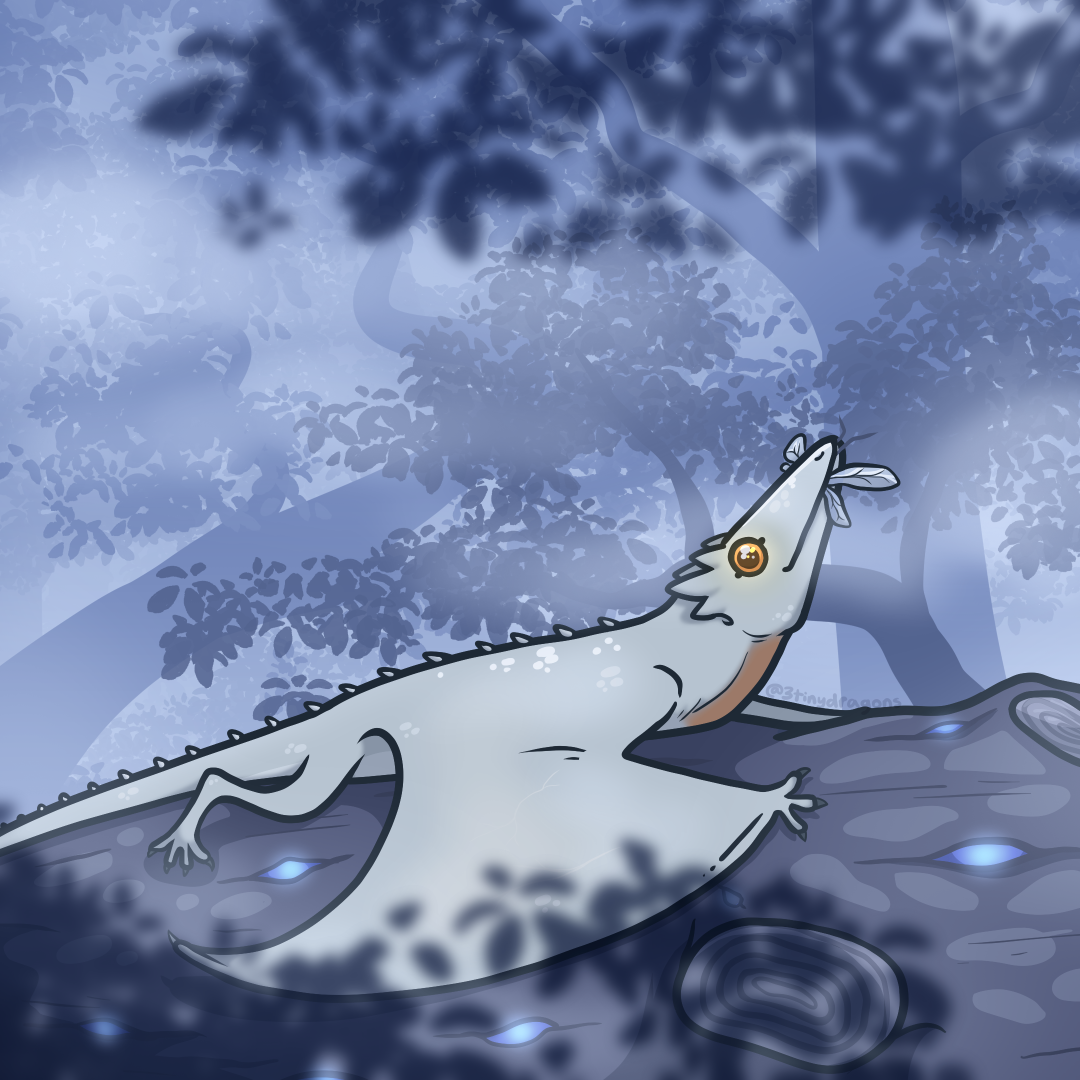Cloud Wyvern
"If you sit very still and be very quiet, you'll start to see them. Look for their eyes, they light up whenever they take off."
Cloud wyverns are a small, pale wyvern native to the Avrodian Cloud Forest. They are nimble, quiet, and rarely seen. They are one of the few cloud forest natives that use solar Glow, which helps keep them warm.
Basic Information
Anatomy
Like all wyverns, cloud wyverns have modified forelimbs that work as wings. Their wings are best equipped for short, quick flights. They have sharp claws that allow them to easily cling to tree bark. Their bodies are covered with circular scales, and small spikes line their spine.
They have pointed snouts and large circular eyes with round pupils. Their mouths are lined with cone-shaped teeth. They typically crawl on all fours, only switching to a two-legged gait for short bursts of speed. Their ankles have a wide range of rotation, so they can climb up and down trees while facing any direction.
Males have a dewlap, which they use to intimidate other males and attract females. Males also have a crest of spikes behind their head. Females are slightly larger than males on average. Neither sex grows longer than 18 inches.
They have a long, thin tail. In a dire situation, they can voluntarily break off their tail, leaving it behind and giving the wyvern a chance to escape.
Celestial Powers
Cloud wyverns lack a celestial core and rely entirely on their nexus to obtain and use Glow. They're Luminous with Sao, the second sun. Without a core, they are unable to cast any spells, and instead just use the Glow's warming properties to help them stay active in their cold and damp habitat.
Cloud wyverns are diurnal so they can take advantage of as much sunlight as possible. This also helps them avoid some of the more dangerous predators of the forest, which are primarily nocturnal.
Genetics and Reproduction
Cloud wyverns reproduce sexually and mate during the warmer Dawn year. They lay eggs in small, protected nests high in the forest canopy. A mother will protect her nest until the first egg hatches. She then flies off, leaving the hatchlings to fend for themselves. It is not uncommon for other wyverns to eat hatchlings.
Hatchlings are solitary from birth and rely on instinct to survive. They reach sexual maturity by the next Dawn.
Other than mating, cloud wyverns don't associate with their own kind. Males frequently get into scuffles over mating rights to females. Females are not afraid to hurt or kill any male that she deems an unfit mate, or a threat to her eggs.
Ecology and Habitats
The Cloud Forests are cloud wyverns' only native habitat. They keep to the upper levels of the forest--a cloud wyvern on the forest floor is easy pickings for predators.
In the morning, they will gather at the top of the canopy to soak up the sunshine. This warms them and allows them to collect enough Glow to keep them active for the rest of the day. They sleep at night in hidden alcoves between tree branches. Their small size and pale coloration help them to vanish between the foggy branches.
They use their sharp eyesight and hearing to hunt insects. Sometimes a group of wyverns will raid a colony of insects together.


Colorful Cousins
Cloud wyverns are genetic relatives to the vibrant paradise wyverns of Eastern Auzera. Cloud wyverns are much more quick-witted and wary than their tropical cousins, and don't tolerate domestication. Successful breeding between paradise and cloud wyverns has been documented, but the offspring aren't fertile.




Aaa absolutely adorable. The art is so cute as well. Can they regrow the lost tail?
Yes they regrow their lost tail, though it can take a while to get as long as it was before! And thank you so so much <3